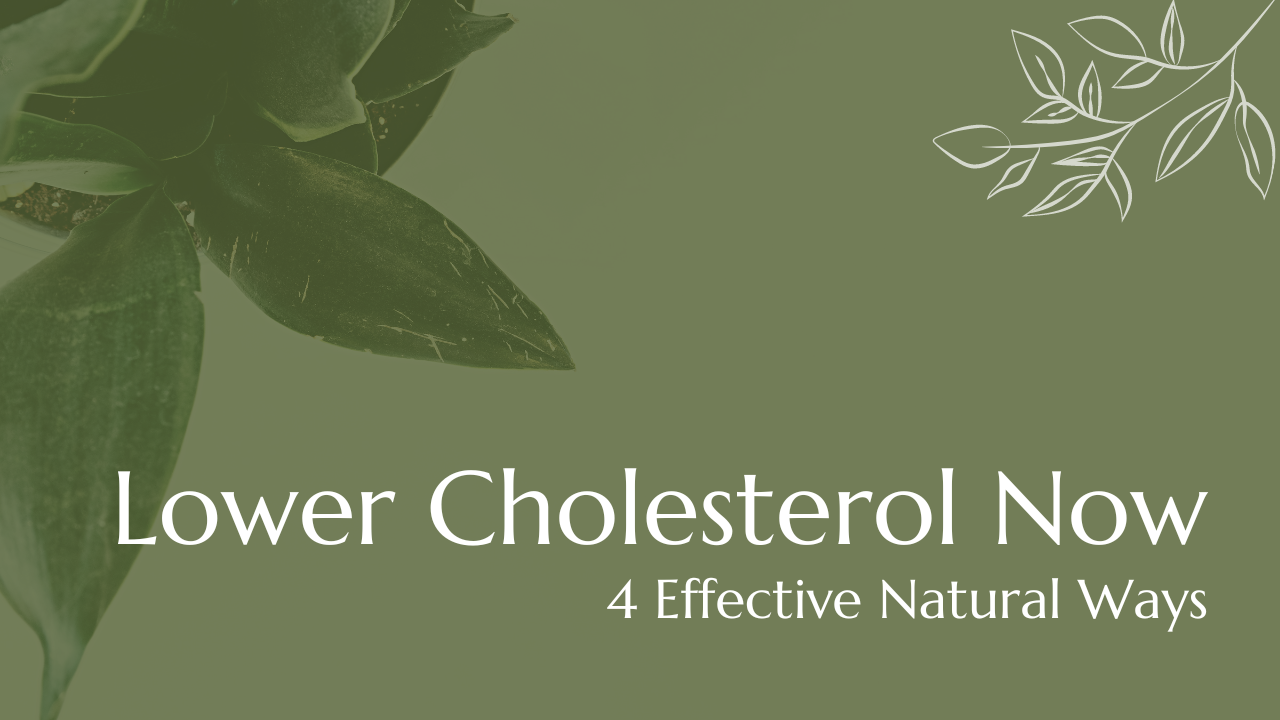In a world where health challenges are on the rise, high cholesterol has emerged as a prevalent concern affecting many individuals. With the hustle and bustle of daily life, the importance of maintaining optimal cholesterol levels often takes a backseat. As awareness grows, more people are seeking alternative, holistic methods to address this issue without solely relying on medications. This article aims to explore a well-rounded perspective on naturally managing high cholesterol, emphasizing lifestyle changes and mindful choices that contribute to overall heart health. Join us as we navigate through the realms of holistic well-being, uncovering the pathways to a balanced life and a healthier heart.
What exactly is Cholesterol?
Cholesterol, a substance resembling fat, is naturally present in every cell of the body. While excessive cholesterol poses health risks, it plays a vital role in constructing cell membranes and facilitating the production of essential elements such as sex hormones (estrogen and testosterone), vitamin D, and bile acids crucial for fat digestion.
The liver is the primary producer of the body’s cholesterol, generating the necessary amount. Nevertheless, certain foods contain cholesterol, and specific dietary choices can stimulate the liver to produce more.
Elevated levels of LDL cholesterol contribute to the accumulation of fatty deposits on artery walls, heightening the risk of heart disease, heart attacks, and strokes.
On the flip side, HDL cholesterol functions as a beneficial agent, collecting LDL cholesterol and other fats from arteries and transporting them back to the liver for disposal. The liver converts excess cholesterol into bile, a digestive fluid.
Maintaining a healthy balance is key, with experts advising adults to keep their total cholesterol levels below 200 milligrams per deciliter. Emphasizing the importance of having higher levels of HDL cholesterol than LDL cholesterol, this approach promotes overall cardiovascular health and reduces the risk of associated complications.
The Impact of Exercise on Cholesterol Levels
Exercise is a powerful tool for improving cholesterol levels, specifically by increasing high-density lipoprotein (HDL) cholesterol, commonly known as the “good” cholesterol. To harness these benefits, consider incorporating moderate physical activity into your routine. With your doctor’s approval, aim for at least 30 minutes of exercise on most days of the week or engage in vigorous aerobic activities for 20 minutes three times a week.
To kickstart weight loss, integrating physical activity into your daily life, even in short intervals, can make a significant difference. Here are some practical suggestions:
- Take a brisk daily walk during your lunch hour.
- Opt for biking to work as a sustainable and heart-healthy commute.
- Engage in a favorite sport to make exercise an enjoyable part of your routine.
For added motivation, consider teaming up with an exercise buddy or joining a fitness group. By prioritizing regular physical activity, you can not only enhance your cholesterol profile but also embark on a journey toward a healthier and more active lifestyle.
Dietary Strategies
When it comes to managing cholesterol levels, the emphasis on a low-fat diet for weight loss has been met with mixed research findings. Experts suggest that rather than adopting an overall low-fat approach, focusing on specific fats can yield more favorable outcomes. Substantial evidence supports the idea that a diet rich in monounsaturated fats, exemplified by the Mediterranean diet, can effectively reduce levels of harmful LDL and elevate levels of beneficial HDL.
Sources of monounsaturated fats that can be incorporated into your diet include olive oil, nuts (such as almonds, cashews, and pecans), canola oil, avocados, nut butters, and olives.
Furthermore, prioritizing polyunsaturated fats, particularly omega-3s, has shown promise in reducing LDL cholesterol and minimizing the risk of heart disease. Research also suggests a potential link between polyunsaturated fats and a decreased risk of metabolic syndrome and type 2 diabetes. Omega-3 fatty acids, found in fatty seafood like salmon, mackerel, herring, deep-sea tuna, and shellfish, are notably heart-healthy.
On the flip side, it is essential to limit the intake of trans fats, which undergo a process called hydrogenation, making unsaturated fats more stable. Unlike other fats, the body processes trans fats unfavorably, increasing both LDL and total cholesterol while decreasing the beneficial HDL. Foods containing trans fats include margarine, shortening, pastries, baked goods, certain microwaveable popcorn, fried fast foods, some pizzas, and nondairy coffee creamer.
Additionally, integrating soluble fiber into your diet can contribute to lowering LDL levels and potentially offer protective effects against cardiovascular diseases. Excellent sources of soluble fiber include oat cereals, beans, lentils, Brussels sprouts, fruits, peas, and flaxseeds. By incorporating these dietary strategies, you can take proactive steps toward promoting heart health and overall well-being.
Learn about The Oxidized Cholesterol Strategy
Introducing “The Oxidized Cholesterol Strategy,” a four-week guide designed to navigate you through a healthier dietary regimen. This strategy focuses on diminishing plaque buildup, lowering cholesterol levels, and ultimately reducing the risks associated with heart problems and strokes. Embark on a journey towards a heart-healthy lifestyle, empowered with knowledge and practical steps for long-term well-being.
Within the pages of this book, you’ll gain insights into the behaviors and routines contributing to the accumulation of cholesterol in your arteries. More significantly, you’ll acquire the skills to adopt a lifestyle that effectively manages your cholesterol, ensuring the longevity of your arteries well into your later years.
Structured into three distinct parts — theoretical, a blend of theory and practice, and practical — the book offers a comprehensive approach to understanding and addressing cholesterol-related concerns.

No Smoking
Tobacco use not only poses a well-known risk to respiratory health but also plays a significant role in cholesterol levels. Smoking has been linked to elevated it, primarily due to its impact on the levels of high-density lipoprotein (HDL), commonly referred to as the “good” cholesterol.
Moreover, the chemicals found in cigarette smoke go beyond the respiratory system, influencing the behavior of low-density lipoprotein (LDL). Exposure to these chemicals can render LDL stickier, leading to potential complications. The harmful components of smoke can also inflict damage on the delicate lining of blood vessels, causing inflammation and swelling. This inflammatory response contributes to the difficulty in managing cholesterol levels, thereby increasing the susceptibility to arterial blockages.
Choosing to quit smoking emerges as a pivotal step in restoring and maintaining cardiovascular health. This decision can bring about a reduction in LDL levels while simultaneously boosting HDL levels. By doing so, the process aids in slowing down the formation of new fatty deposits within the arteries, promoting a healthier circulatory system and reducing the overall risk of cardiovascular issues. In essence, quitting smoking serves as a proactive measure towards not only improving cholesterol profiles but also supporting comprehensive well-being.
Not smoking is very good for your Oral Health as well!
Conclusion
In the pursuit of optimal heart health and cholesterol management, this comprehensive exploration has illuminated various facets of a holistic approach. From the significance of regular exercise and dietary choices rich in monounsaturated and polyunsaturated fats to the detrimental effects of trans fats and the importance of soluble fiber, the journey towards a heart-healthy lifestyle is multifaceted.
Understanding the intricacies of cholesterol, recognizing its essential role in the body, and grasping the potential consequences of elevated levels underscore the need for informed decision-making. The Oxidized Cholesterol Strategy, presented as a four-week guide, further empowers individuals to navigate a dietary path that not only reduces plaque buildup but also mitigates the risks associated with heart problems and strokes.
Moreover, lifestyle modifications, such as quitting smoking, emerge as pivotal interventions. Beyond the respiratory concerns, smoking’s impact on its levels, specifically its influence on HDL and LDL cholesterol, signifies the broader implications of tobacco use on cardiovascular well-being. By embracing a smoke-free lifestyle, individuals can actively contribute to lowering LDL, elevating HDL, and fostering a cardiovascular environment conducive to overall health.
As we conclude this journey through the realms of holistic heart health, it becomes evident that a harmonious integration of exercise, dietary choices, and lifestyle adjustments can significantly impact cholesterol profiles and enhance overall well-being. Armed with knowledge and practical insights, individuals can embark on a path that not only manages it but also fosters a proactive approach to heart health, paving the way for a healthier, more vibrant life.






